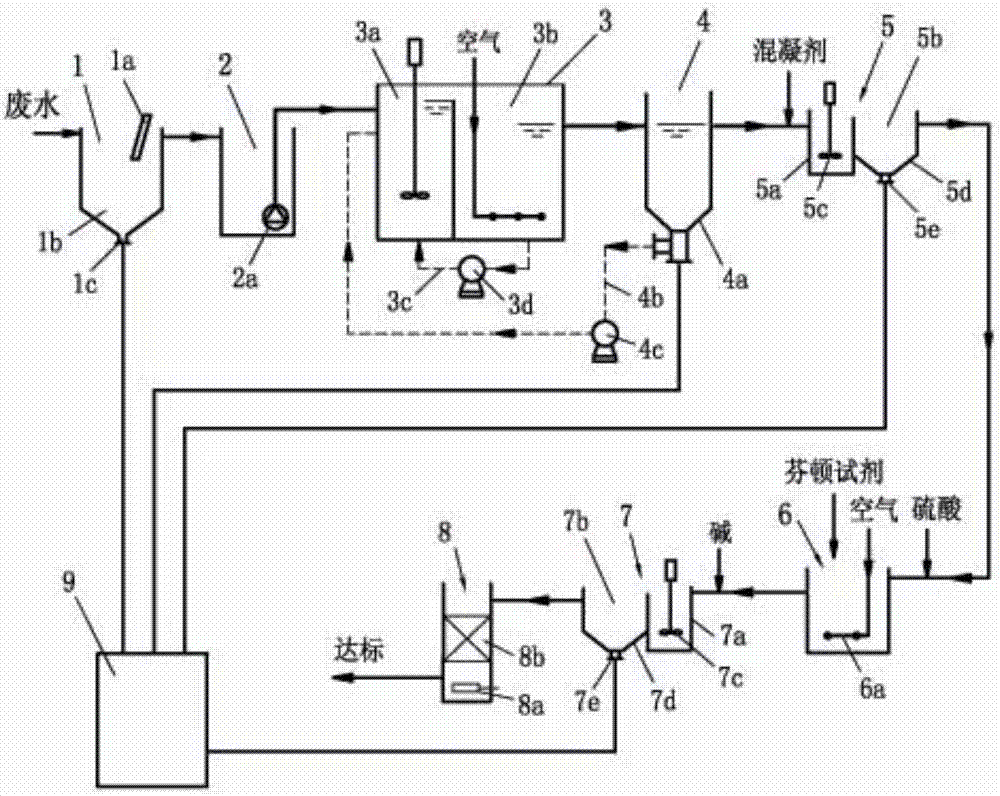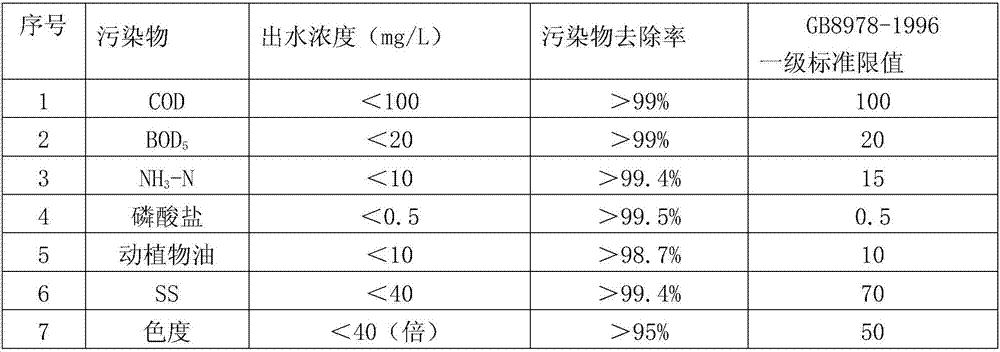Kitchen waste fermentation wastewater treatment device
A technology for fermenting waste water and kitchen waste, applied in the direction of backflow water treatment, multi-stage water treatment, water/sewage treatment, etc., can solve the problems of high operating cost, blockage of reverse osmosis membrane, unsatisfactory, etc., to avoid frequent cleaning, Effective denitrification and improvement of operating efficiency
- Summary
- Abstract
- Description
- Claims
- Application Information
AI Technical Summary
Problems solved by technology
Method used
Image
Examples
specific Embodiment approach
[0023] See the attached picture for a treatment scale of 100m 3 / d of kitchen waste wastewater as an example, the specific implementation is as follows:
[0024] Wastewater after anaerobic digestion and dehydration of food waste slurry and waste water produced in other processes of food waste treatment Water quality: COD: 12000-15000mg / L, BOD 5 : 4500~5000mg / L, TN: 2100~2400mg / L, NH 3 -N: 1800~2000mg / L, TP: 110~130mg / L, SS: 7000~10000mg / L, animal and vegetable oil: 800~1000mg / L, pH: 7.5~8, chromaticity: 800~1000 times.
[0025] Referring to the accompanying drawings, the present invention includes an oil separation primary sedimentation tank 1, a regulating tank 2, an A / O biochemical treatment device 3, a sedimentation tank 4, a first coagulation sedimentation tank 5, a Fenton reactor 6, and a second coagulation sedimentation tank 7. Biological aerated filter 8;
[0026] The oil-separating primary sedimentation tank 1 has an oil slick baffle 1a on the top, a sludge chamber ...
PUM
 Login to View More
Login to View More Abstract
Description
Claims
Application Information
 Login to View More
Login to View More - R&D Engineer
- R&D Manager
- IP Professional
- Industry Leading Data Capabilities
- Powerful AI technology
- Patent DNA Extraction
Browse by: Latest US Patents, China's latest patents, Technical Efficacy Thesaurus, Application Domain, Technology Topic, Popular Technical Reports.
© 2024 PatSnap. All rights reserved.Legal|Privacy policy|Modern Slavery Act Transparency Statement|Sitemap|About US| Contact US: help@patsnap.com









